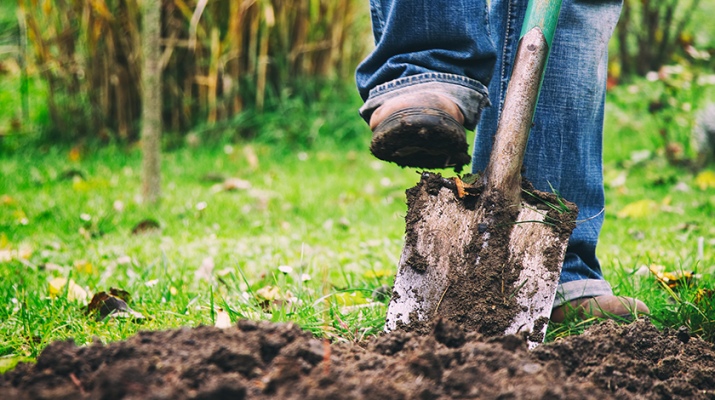Rate substantially higher than that of the general population
By Deborah Jeanne Sergeant
 The Centers for Disease Control and Prevention (CDC) reported in November that from 2000 to 2016, the U.S. suicide rate among adults 16 to 64 years increased 34 percent, from 12.9 per 100,000 population to 17.3.
The Centers for Disease Control and Prevention (CDC) reported in November that from 2000 to 2016, the U.S. suicide rate among adults 16 to 64 years increased 34 percent, from 12.9 per 100,000 population to 17.3.
Among male farmers, that rate multiplied by 1.5 times. In other words, farmers commit suicide at the alarming rate of 29.95 per 100,000.
Although suicide represents a very complex health crisis, the CDC identified occupational factors that affect suicide risk, including job insecurity, access to lethal means on the job, working conditions and stress. All of these factors can intersect with farming — and more.
Kate Downes is programming coordinator at New York FarmNet in Ithaca, a statewide organization that offers on-farm analysis, business planning and well-being services.
“Farmers are really incredible people and incredibly dedicated,” she said, “sometimes, to a fault.”
Many small farms are family run with traditional roles, meaning husbands are responsible for many of the chores and business operations. If they hire outsiders, the farmer is also an employer. Often, the wife and sometimes the husband may work off the farm to help bring in more income and health benefits. That arrangement may help with income, but it also takes away time from the farm, which can generate more stress.
Farm income and longevity relies upon weather, plant and animal health and consumer whims, all of which farmers can’t control much, if at all. Farming is inherently physically taxing, dirty and dangerous at times, even at the most advanced, cleanest and safest farms.
With dairying, farmers truly never get a break. With limited finances, taking a vacation is out of reach even if they could get help to take over chores. Cows require milking and feeding twice daily. There’s also planting, tending and harvesting crops, maintaining equipment and buildings, and cleaning the animals, barn and equipment. Farmers must carefully monitor animal health and calving. For all that work, farmers receive less for their herd’s milk today than they did in the early 1980s because of government price controls. Other commodities have been struggling as well for the past several years.
“With any farmer, they don’t get to set a price to be paid for what they produce unless they direct market their items,” Downes said.
Going that route takes additional education and a sizable capital investment in new facilities and licenses for most farmers.
Quitting farming may seem an easy out; however, it’s not so easy for farmers to give up their family heritage.
“It’s not just losing their job,” Downes said, “but land that’s been in the family forever. They likely employ family members. Usually, their farmhouse is on the property. Farming is an identity. There’s an immense amount of loss, akin to losing a family member, to quit.”
Smaller farmers who have exhausted their lines of credit may not be capable of selling readily. Who wants to buy into an industry that’s been struggling so desperately? Larger farms usually don’t want to buy smaller scale equipment and that’s where smaller farmers invested most of their money.
“They don’t know what to do or where to turn,” Downes said. “Their hands are tied.”
Most farmers own weapons and have access to many other potential means of self harm because of the inherent dangers farming involves. That’s one reason that some experts believe the suicide rate statistics for farmers are actually underestimated: some “accidental” deaths weren’t counted.
Farms’ rural location can exacerbate feelings of isolation and limit access to mental health help.
“One of our personal consultants said it’s okay to meddle and ask them pointedly how they’re doing,” Downes said. “Otherwise, they could brush it off. If a neighbor notices someone is really doing badly, confront them.
“Help connect them with behavioral health providers like the county mental health office.”
FarmNet also offers a free referral line that’s manned by a live operator 24/7 every day of the year. The organization also dispatches consultants to the farm to help with finances and licensed clinical social workers for coping with the stress on the farm.
“If there is a situation where there’s more advanced behavioral health concerns, we can make outside referrals,” Downes said. “We can help call and make appointments and wait with the farmer in the waiting room.”
Kim Fortin, licensed clinical social worker in Weedsport, also operates 4 Tin Fish Farm, a 100-goat dairy in Conquest. She understands farming firsthand.
“If you look at this occupation, it is very high-stress, often more individualized and isolated,” Fortin said. “Traditionally, our culture says are supposed to be tough, keep it together and provide for the family. You don’t ask for help.”
Combining that stereotype with farming’s many variables, hard work and low remuneration, it’s a recipe for despair for many.
“If the weather is good and you’re a crop farmer, you don’t rest for three or four days because you have to get it all in,” Fortin said. “You stay up until it’s planted. People don’t make good decisions running on two hours’ sleep.”
She encourages loved ones and friends to ask about what’s going on.
“You won’t put the idea of suicide in their head,” Fortin said. “Say, ‘I recognized this to be true and some people may think of suicide. Is this something you’re thinking about?’ If the answer is yes, say, ‘Let me help you go get help.’”
Many express relief that others have identified how stressed and hopeless they feel. Mosey said that supporting another person emotionally can go a long way towards seeking help and finding relief.
Cheryl Giarrusso, director of crisis intervention services at Contact Community Services in East Syracuse, said that for some, “giving them the opportunity to share how they feel” makes a world of difference.
“If it’s hard for you to hear it, find someone who can hear them. That’s important to share how deep and dark things have gotten for them.
“When you’re in that dark place, you just don’t have the kind of vision. But to reach out and share your situation with someone, they might be able to see something you’re unable to see because you’re so low.”
For someone in imminent danger, get emergency help by calling 911 or taking the person to a hospital emergency room.
“People can present as a real crisis, but with the time and space to talk, they can feel better,” Giarrusso said.

